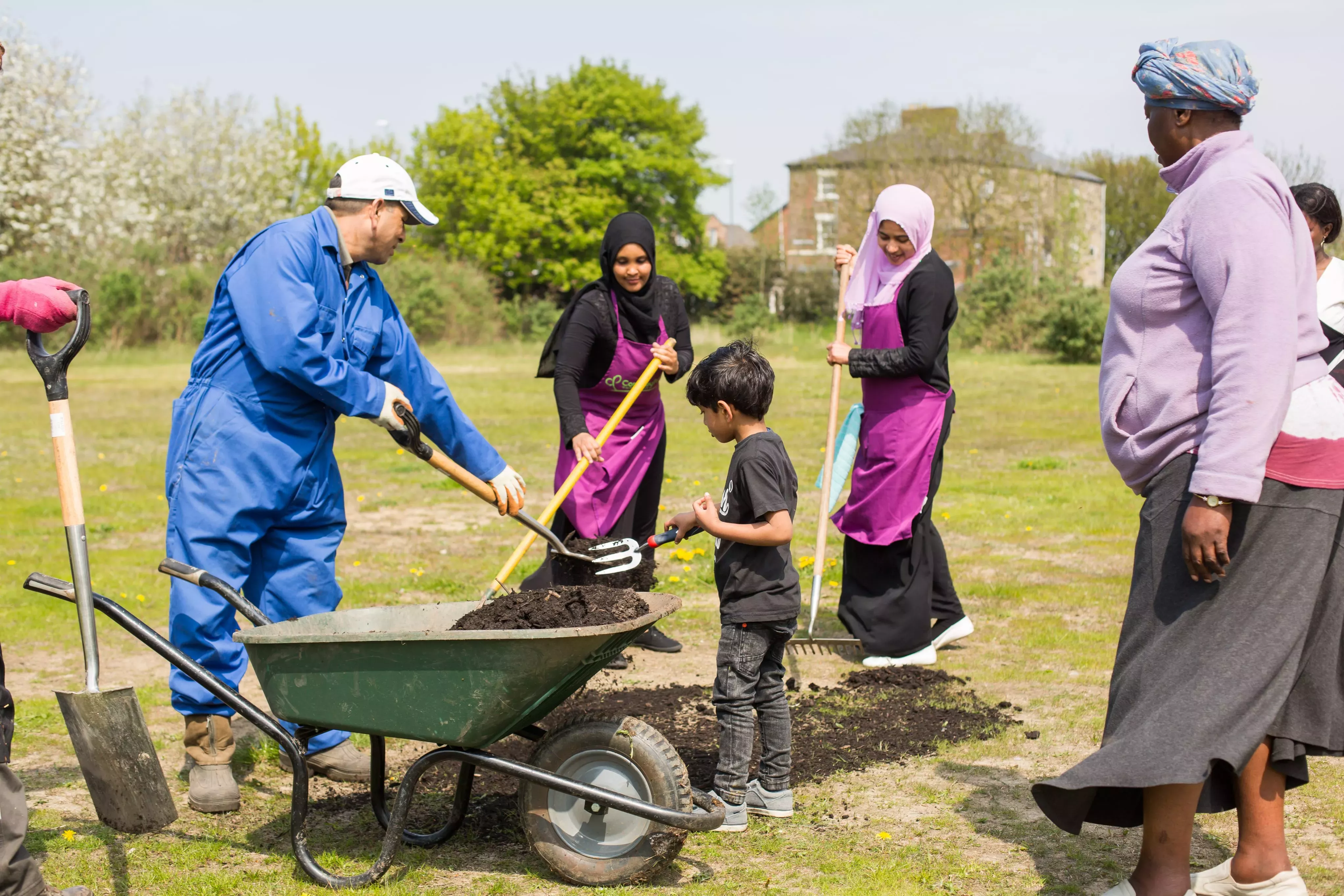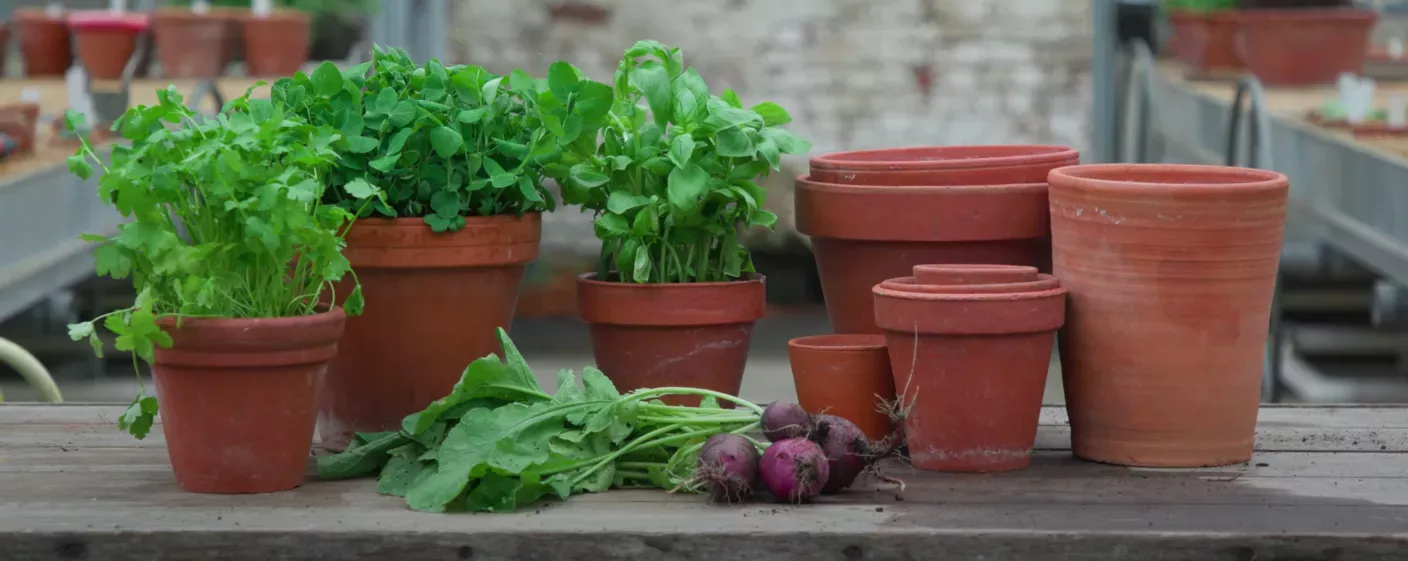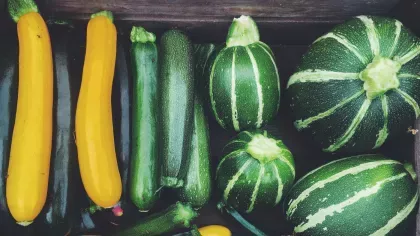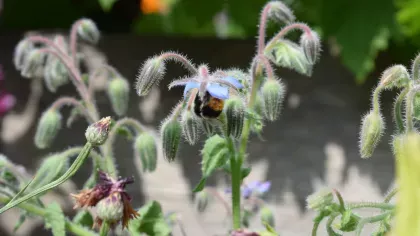18 July 2022
How to: Get going with growing vegetables
Find out how to grow veg that are good for you and the planet.

Growing your own vegetables brings a massive range of benefits: enjoy the delicious fruits of your labour, improve your diet, reduce emissions, and improve your own health and wellbeing by keeping active in the garden.
Read on to discover five steps to get going with growing.
1. Decide where you are going to grow
You don’t need a garden or an allotment to get going with growing! Have a go on your windowsills, in pots or on the balcony.
Understanding your growing space is key to a successful vegetable garden and getting the most from the plot.
TOP TIP
Observe your space; where does the sun fall and at what time of day? What type of soil do you have? What is growing well already? The answers to these questions will indicate what crops will thrive.
Check out our list of the best vegetables to grow on your windowsill.
2. Decide what you would like to grow
Grow what you want to eat, and plant crops that grow well in your space!
Rather than spending time trying to change what nature has provided, success is more likely found in choosing the right plant for the right place.
You could consider growing one or more of these types of vegetables:
Alliums:
-
Veg like onions, garlic and leek are great to grow because they provide flavour to most meals, and can be dried and stored.
-
Many alliums come from hot dry climates so want free-draining soil that gets baked in the hot months. They will often survive cold weather, but do not thrive in very wet conditions.
- Their distinctive smell can also provide protection from pests.
Brassicas:
-
Broccoli, cauliflower, sprouts, kale and cabbage are all brassicas.
- Brassicas enjoy cooler conditions and often take a long time in the ground to mature. They are some of the hardiest plants in the veggie garden, meaning they're great for winter harvests.
TOP TIP
Try making your own compost from your food waste. You don't need loads of space, you could use a compost bin, or even a wormery in the kitchen.
Fruiting vegetables
- Tomatoes, peppers and aubergines fall into this category: technically they are fruits, not vegetables.
- Fruiting crops usually don't like frost, so the seeds will need to germinate on a windowsill or in a greenhouse, and then be transplanted outdoors once the risk of frost has passed. They like lots of sun!
Salad crops
- There are loads of varieties of leaves that you can grow, and they're great for growing in small spaces.
- Just sprinkle the seeds in a pot or windowbox indoors and keep harvesting them throughout the season!
TOP TIP
Equipment and pots should be cleaned after every use to stop diseases spreading around the vegetable plot.
Legumes
- These are staples like peas and beans.
- Quite often they are climbing plants, so they'll need some support, like bamboo canes, and space to grow upwards.
Roots
- Potatoes, carrots and parsnips are root vegetables.
- Most root crops enjoy free-draining soil as they often rot if growing in too much water.
3. Prepare your plot
Choose the sunniest spot you have available. Prepare your soil well by removing weeds and mixing in some compost.
You don’t need a veg plot, you could try growing tomatoes straight from a bag of compost, lettuce in a window box, or chillies in a pot.
Pollinators are vital for the future of our food, so check out this video to see what you can grow to support them. Many of these plants will also help protect your vegetable crops from pests, so it's a win win!
TOP TIP
Save money on festiliser by growing your own. Comfrey has a long tap root which can access nutrients that most plants can’t. Use the leaves to make a compost tea, or just put them in the bottom of your pots.
4. Sowing, watering, mulch and feed
Most vegetables start life as a seed, which needs to be germinated, grown on and ends up as a delicious harvest.
Once you have decided what to grow and got your hands on some seeds, the packets will tell you how to plant them and at what time of year.
TOP TIP
Buying good quality tools means they will last longer. Buying new can be expensive, but antique shops and car boot sales are great places to pick up well made, second hand tools.
Check on your plants regularly, get to know them. You can push your finger into the soil to check that it is moist, but not sodden, and water as the packet instructions advise.
In general, a healthy soil will be fertile enough to support any crop, but occasionally crops require additional feeding. Organic fertilisers are derived from natural sources such as animals and plants.

5. Harvest and enjoy!
It is time to delight in the fruits of your labour!
Our new anthology of vegetarian recipes from celebrity chefs and food writers worldwide provides inspiration when cooking with plants, everything from simple midweek dinners to show-stopping bakes.




